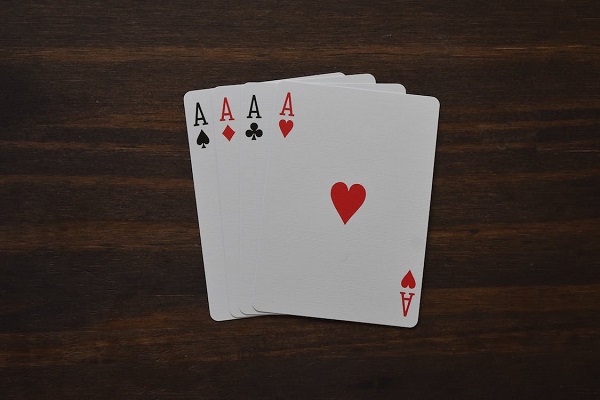How Many Rows in Solitaire ? A Complete Guide Solitaire Rules

Solitaire, also known as Klondike or Patience, is a classic card game that has captured the hearts of players around the world. The game’s objective is simple: to arrange cards in ascending order within the tableau, ultimately assembling them into four foundation piles by suit. Despite its straightforward rules, Solitaire can be surprisingly challenging and addictive. In this complete artcile you will learn about the How Many Rows in Solitaire.
Also Read:- Google Memory Games- A Complete Guide How To Play
In this introduction, we embark on a journey to explore the fundamental aspects of Solitaire, with a particular focus on the number of rows in the game. The layout of the tableau, or the arrangement of cards on the playing surface, plays a crucial role in determining the game’s difficulty and the strategies required for success.
Read on to discover how many rows in solitaire, as well as some of the more popular variations.
As we delve into the world of Solitaire, we will uncover various versions and variations of the game, each with its own distinct tableau layout. From the traditional seven-row tableau to more complex versions with fewer or more rows, we will examine how the number of rows impacts gameplay and influences the player’s experience.
Throughout this exploration, we will gain insights into the strategies, tips, and tricks that can aid players in mastering Solitaire, while also shedding light on the game’s history and enduring popularity. Whether you are a seasoned Solitaire enthusiast or a curious newcomer, join us as we unravel the mystery of Solitaire rows and uncover the captivating world of this timeless card game.
How Many Rows are in solitaire
When you set up a solitaire game, How many rows in solitaire? You’ll divide the tableau into seven columns. The first column on the left contains one card, the one to its right has two cards, the one to its right has three cards, and so on until the seventh and final column has seven cards. Only the top card in each column will be face up, while the cards beneath it will be face down. Instead of stacking the cards in each column on top of each other, cascade them a little so you can see how many cards are left in each column.
Basic Rules of Solitaire
- Deck Setup: A regular 52-card deck is used to play solitaire. Before starting the game, thoroughly shuffle the cards.
- Tableau Setup: Make seven face-down piles of cards to make the tableau. The first pile has one card, the second two (one face-down and one face-up), the third three (one face-down and two face-up), and so on until the seventh pile, which has seven cards (one face-down and six face-up).
- Foundation Piles: The tableau is supported by four foundation piles. The foundation piles are empty at the start of the game. The goal is to construct these piles in ascending sequence, beginning with the Ace of each suit (Ace, 2, 3, 4, 5, 6, 7, 8, 9, 10, Jack, Queen, and King).
- Moving Cards: Cards can be moved between stacks using the following rules: a. You can transfer a face-up card from one tableau pile to another, placing it on top of a card of the opposite color and one rank higher. b. A sequence of face-up cards that form a descending sequence of alternate colors (e.g., red King on black Queen) can be moved as a unit. c. Only a King (or a sequence beginning with a King) can fill an empty tableau pile.
- Stock and Waste Piles: The stock pile is made up of the remaining cards. Draw one card at a time from the stock pile and place it face-up on the garbage pile. You can go through the stock pile as many times as you like, reshuffling the rubbish pile when it’s empty.
- Building Foundation Piles: As you find Aces or cards that can be moved to the foundation piles, place them in ascending order in their corresponding heaps. A foundation pile is considered complete and eliminated from the game once it has a complete suit sequence (from Ace to King).
- Winning the Game: The game is won when all cards have been moved to the foundation piles in ascending order, from Ace to King, for each suit.
- Losing the Game: If there are no more moves left in the tableau or the stock pile, and you cannot build any more cards on the foundation piles, the game is considered lost.
Final Words
Solitaire takes patience, awareness, and the ability to strategize and modify your moves. Each game delivers a different challenge, making it a classic and engaging card game for players of all ages.
FAQs How Many Rows in Solitaire
How many rows are there in a traditional game of Solitaire?
The tableau in a classic game of Solitaire has seven rows or piles.
Can the number of rows in Solitaire be adjusted or varied?
Yes, the number of rows in Solitaire can be changed across versions or variations of the game. Some digital Solitaire platforms or custom rule sets may present players with alternatives with more or less rows to provide varying levels of challenge and complexity.
What is the purpose of having seven rows in the traditional Solitaire setup?
The seven-row arrangement is a classic and regularly used Solitaire setting. It strikes an appropriate balance between challenge and playability. With seven rows of varied amounts of face-up and face-down cards, players face a strategic challenge, as they must carefully plan their actions to uncover hidden cards and form sequences.
Are there Solitaire versions with fewer rows for beginners?
Yes, certain Solitaire variants or mobile apps provide simplified versions with fewer rows, which are perfect for novices or gamers seeking a faster and more accessible game. These versions frequently contain simpler layouts and regulations to assist players in learning the fundamentals of the game.
Are there Solitaire versions with more rows for advanced players?
True, some Solitaire players may choose more difficult varieties with more rows. These versions increase the game’s difficulty and necessitate more careful planning and foresight to complete effectively.
Does the number of rows in Solitaire affect the difficulty of the game?
Yes, the number of rows has a major impact on Solitaire’s complexity. With additional rows, there are more cards to manage and potential moves to consider, increasing the difficulty of the game. In contrast, fewer rows can make the game easier and more appropriate for novices.
Can I customize the number of rows in digital Solitaire games?
Many digital Solitaire games and apps provide customization options, allowing users to change the number of rows to suit their needs. Because of this adaptability, players can adjust the game’s difficulty to their skill level and chosen level of challenge.
Is the number of rows the only factor that affects the difficulty of Solitaire?
No, while the number of rows is an important aspect in defining the game’s difficulty, other factors like as the amount of cards in the stock pile, the number of redeals allowed, and the unique rules of the version being played can all have an impact on the game’s difficulty.










